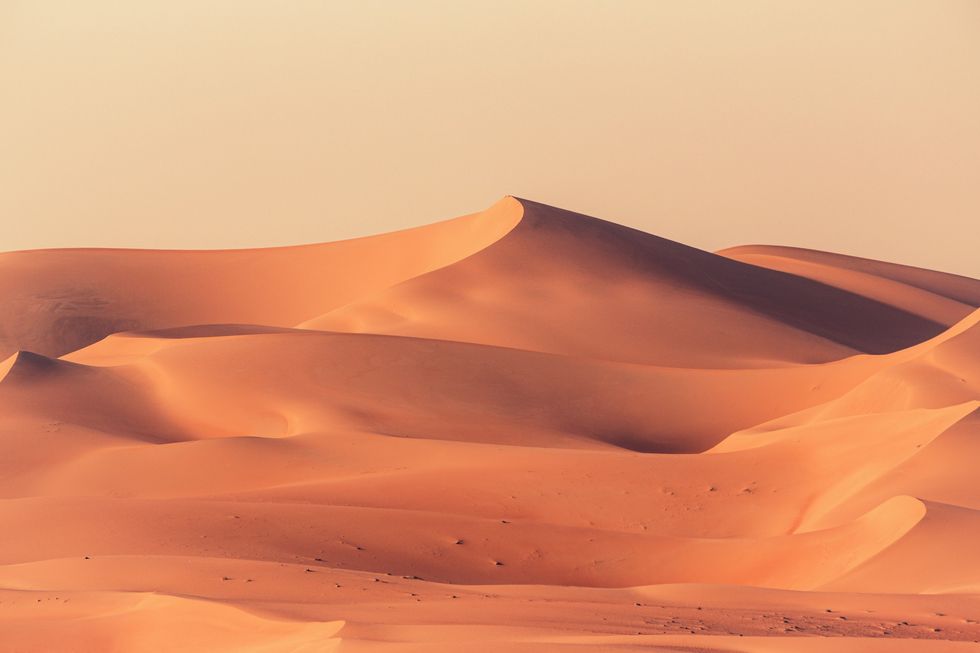Archaeology breakthrough as 5,000-year-old find sparks debate about 'Atlantis of the Sands' myth
The site spans 250,000 square miles
Don't Miss
Most Read
A remarkable discovery beneath the shifting sands of the Rub' al-Khali desert has revealed traces of a 5,000-year-old civilisation that had remained hidden for millennia.
The archaeological site, known as Saruq Al-Hadid, was first spotted in 2002 when Sheikh Mohammed bin Rashid Al Maktoum, ruler of Dubai, noticed unusual dune formations and a large black deposit whilst flying over the desert.
This chance aerial observation led to the unearthing of an area rich in copper and iron smelting remnants.
Researchers have now found evidence of this ancient society approximately 10 feet beneath the desert surface in an area long dismissed as a lifeless sea of sand.

The site was discovered in 2002
|GETTY
The Rub' al-Khali, known as the Empty Quarter, spans more than 250,000 square miles, making it the world's largest continuous sand desert.
This harsh environment has long been associated with the legend of a mythical city, which is thought to have been swallowed by the sands as divine punishment.
This lost city, called Ubar, features prominently in regional folklore.
British officer, TE Lawrence, famous for his role in the Arab Revolt during World War One, referred to it as the "Atlantis of the Sands".
LATEST DEVELOPMENTS
Lawrence described it as a city "of immeasurable wealth, destroyed by God for arrogance, swallowed forever in the sands of the Rub' al-Khali desert".
Researchers from Khalifa University in Abu Dhabi are using Synthetic Aperture Radar (SAR) technology to peer beneath the desert's surface without disturbing the dunes.
This cutting-edge approach allows scientists to investigate what lies beneath the harsh and shifting sands of the Empty Quarter, where traditional excavation methods would be nearly impossible.
The non-invasive nature of SAR technology has proven particularly valuable at the Saruq Al-Hadid site, enabling researchers to detect structures and evidence of human activity that have remained hidden for thousands of years.

The sands of the Rub' al-Khali desert
|GETTY
SAR technology works by sending out pulses of energy and measuring how much it bounces back, allowing researchers to create detailed subsurface images.
The findings at Saruq Al-Hadid have revealed a complex, interconnected society that thrived in the region thousands of years ago.
Researchers identified previously unknown settlements and roadways, which provide key indicators of an organised civilisation.
The site contains multiple layers showing bedrock, sand dunes, and patches of gypsum, with numerous artifacts, ancient metal waste, and animal bones found throughout these strata.











